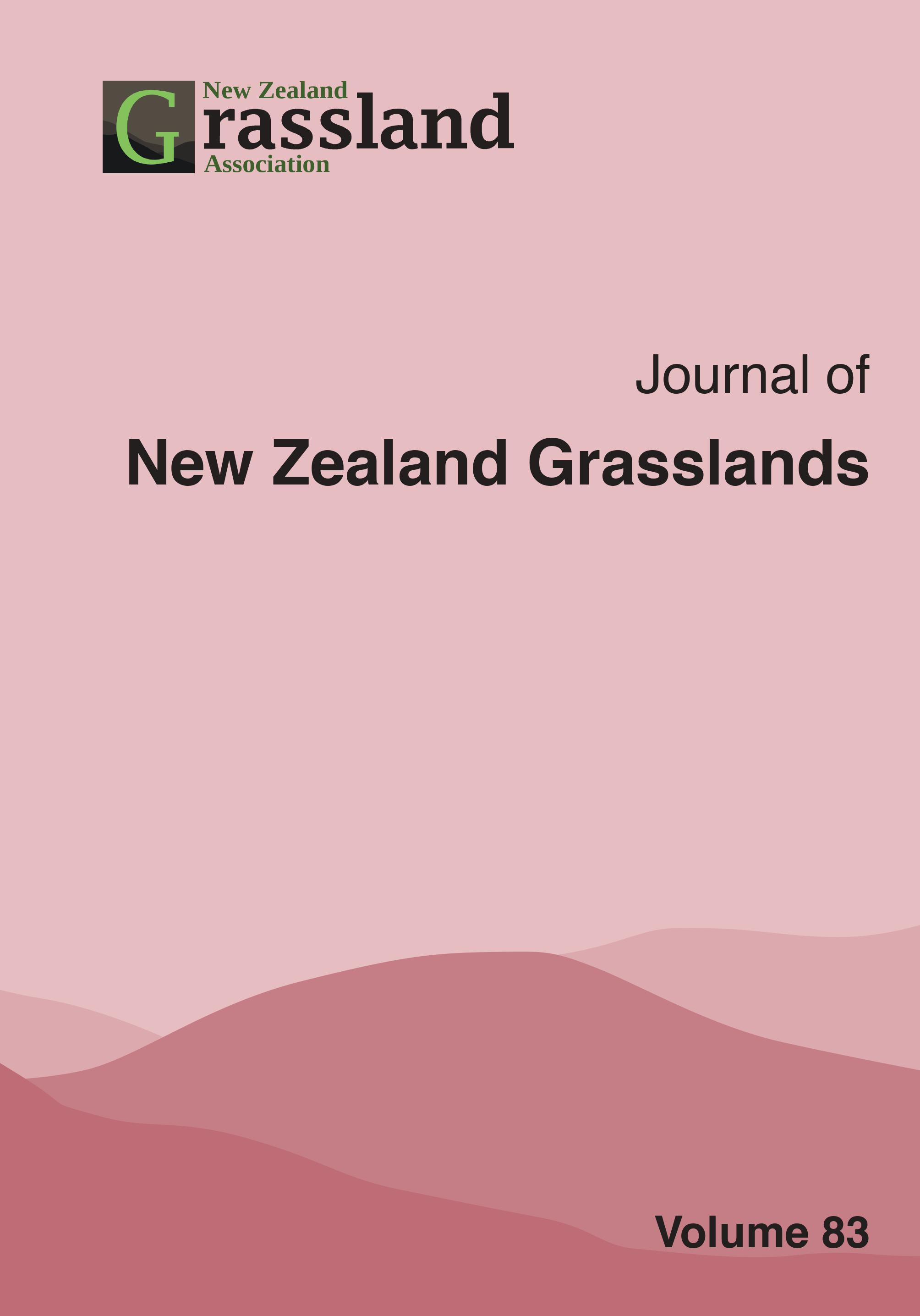Empirical assessment of a genomic breeding strategy in perennial ryegrass
DOI:
https://doi.org/10.33584/jnzg.2021.83.3490Abstract
In genomic selection (GS) DNA markers and trait data are integrated in a model that then predicts genomic-estimated breeding values (GEBV’s) for individuals using DNA marker information alone, improving breeding efficiency. We assessed a genomic breeding strategy (APWFGS) for improving dry matter yield (DMY) in perennial ryegrass. In APWFGS the best-performing half-sibling families (HS) are identified using phenotypic data and GS is used to select the best individuals within those HS. Four selections were made from three breeding populations: Base (random sample of plants from all HS), HSP (random sample from the six phenotypically-best HS), APWFGS and APWFGS-L (top or bottom 5% of plants, respectively, selected by GEBV from the six HS). Selected plants were polycrossed, creating 12 experimental synthetics that were evaluated as sown rows for DMY (n=7 harvests) in field trials at two locations over 18 months. In each population, mean DMY across locations and harvests showed a trend of APWFGS> HSP>Base. Averaged across all populations, APWFGS increased DMY by 43% (P<0.05) compared to Base, more than twice the level of improvement achieved with conventional HSP. Our results show the APWFGS breeding approach can substantially improve selection response for a genetically complex trait from a single breeding cycle.
Downloads
Downloads
Published
How to Cite
License

This work is licensed under a Creative Commons Attribution-ShareAlike 4.0 International License.
Copyright
This work is licensed under a Creative Commons Attribution-Non Commercial-NoDerivatives 4.0 International License. Rights granted to the New Zealand Grassland Association through this agreement are non-exclusive. You are free to publish the work(s) elsewhere and no ownership is assumed by the NZGA when storing or curating an electronic version of the work(s). The author(s) will receive no monetary return from the Association for the use of material contained in the manuscript. If I am one of several co-authors, I hereby confirm that I am authorized by my co-authors to grant this Licence as their agent on their behalf. For the avoidance of doubt, this includes the rights to supply the article in electronic and online forms and systems.




